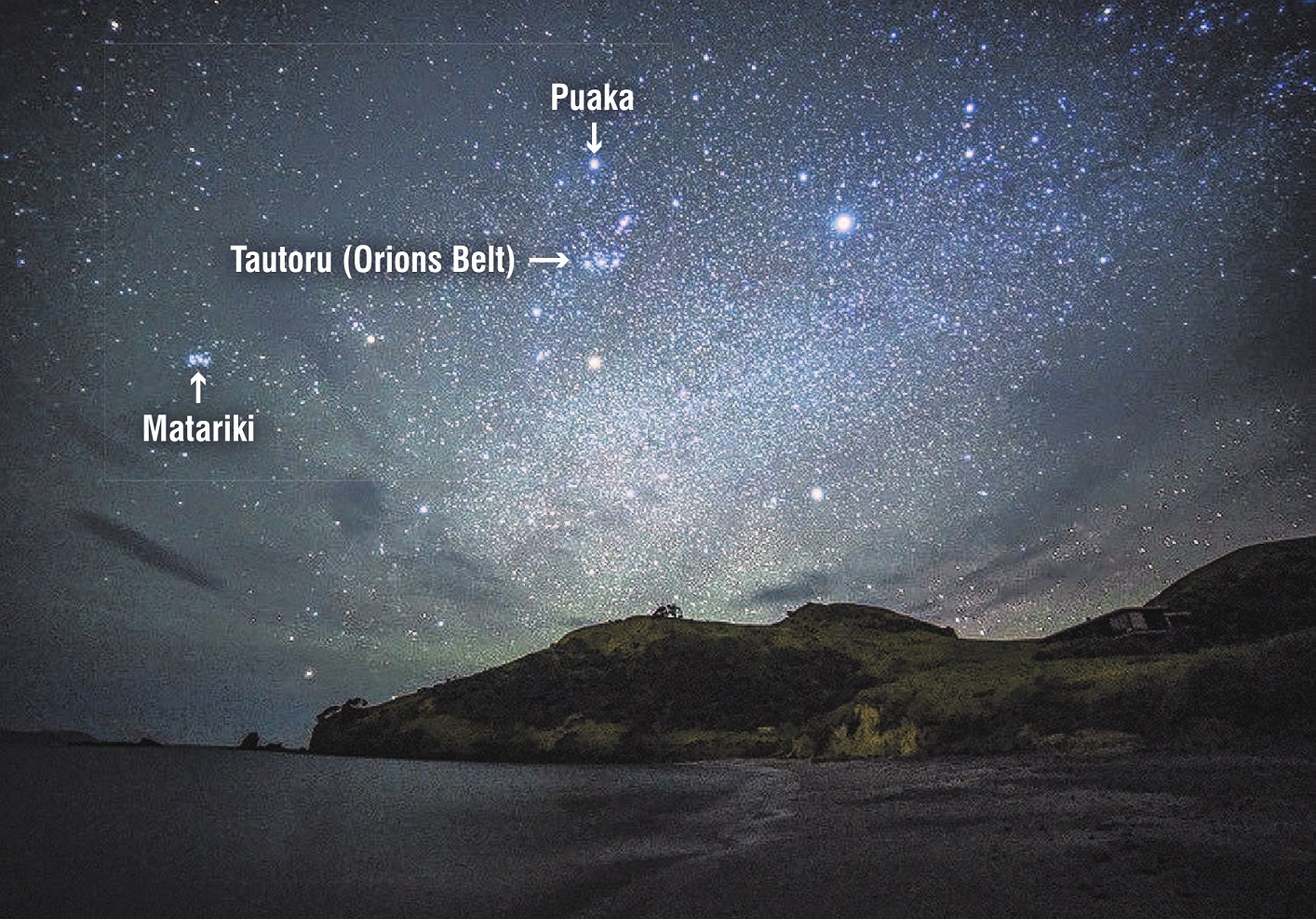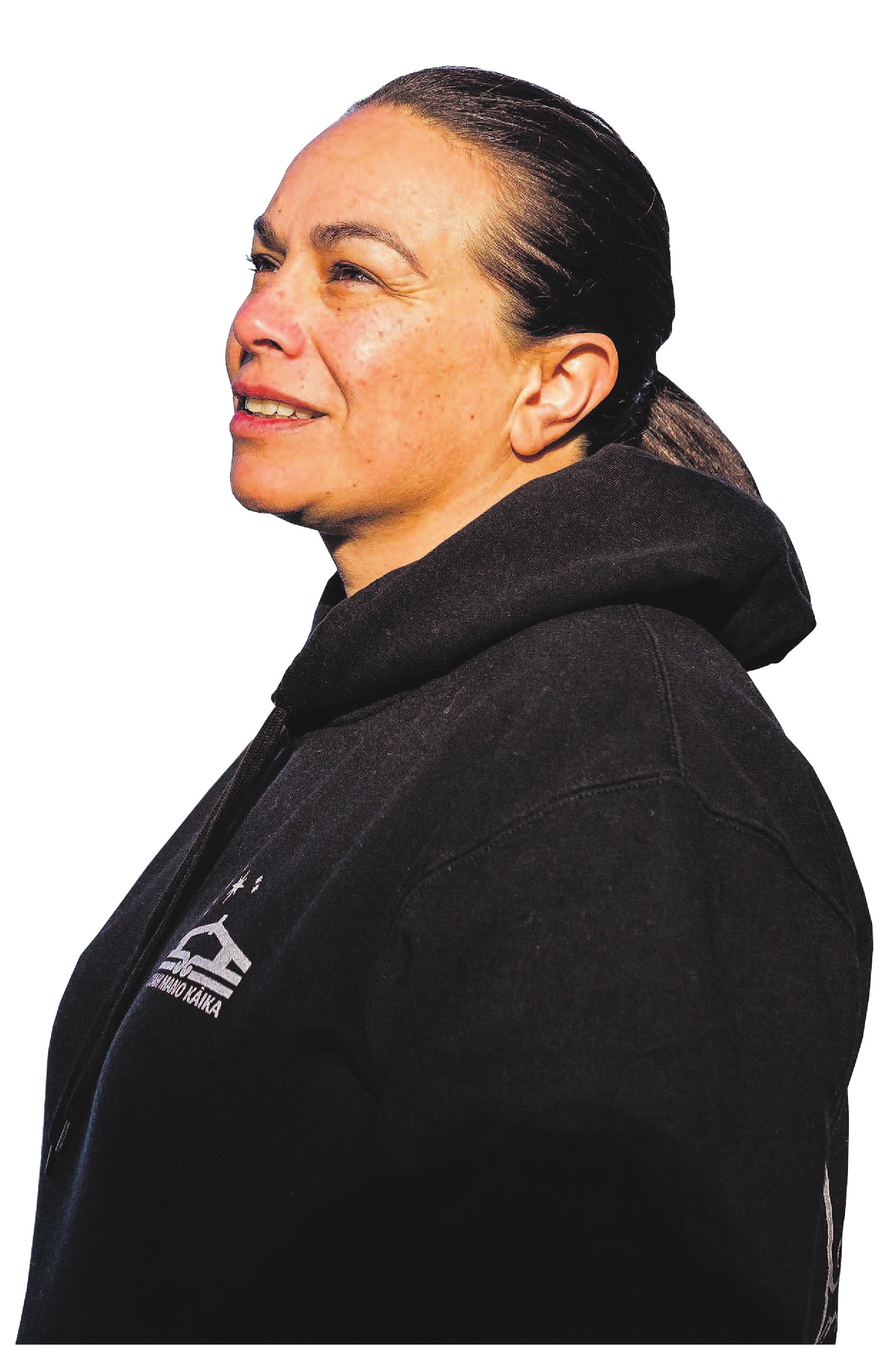
Amid Matariki celebrations, there is one true star of the show for Kāi Tahu, and that is Puaka.
Kāi Tahu astronomer Victoria Campbell said it was not exactly Matariki that signalled to Kāi Tahu the end of the Māori New Year. Instead, it was the star Puaka.
"For Kāi Tahu, Puaka is a revered star.
"Our ancestors had recorded information about the star, as well as lots of other stars."
Puaka, or Rigel, was a blue supergiant star in the constellation of Orion, rising in our southern sky about an hour before Matariki.
Matariki was harder to see clearly in the southern sky, so while most northern iwi celebrated Matariki, southern iwi more commonly acknowledged Puaka.
The star would rise in the South Island about the same time Matariki would rise in the North Island.
Many Kāi Tahu ancestors were recorded by ethnographers speaking of the importance of the star, which Ms Campbell said was associated with seasonality.
"When it rises with Matariki in our pre-dawn sky, it reminds us of our connection to the environment and also to look forward to the onset of spring."
Matariki was important to Kāi Tahu, but Puaka was given preference for its prominence in the sky.
For cultures all over the world the Matariki constellation had connections with food, religion, life and death, agriculture, planting, and harvesting.
"The sky is our oldest storybook.
"The constellations are the pictures to our pūrākau (legends).
"They are the pictures to the stories of many people around the world."
The constellation showed the connectivity we had as humans with the vast universe, as well as each other, she said.
Through historical recordings and passed down knowledge, it was known Māori certainly celebrated Puaka and Matariki, she said.
"It was an important time, marked by ceremony and celebration and gathering — we know that we did those things."
As part of a research project with Tūhura Otago Museum, Ms Campbell had been studying the southern cosmos using traditional Kāi Tahu mātauraka (knowledge).
Ms Campbell only learnt about Puaka through her interest in Māori astronomy and felt called to bring that knowledge to the fore.
"Being able to share this kōrero with people to inspire them to broaden their understanding that there are lots of different strands of the corpus of knowledge, that’s a really important aspect of what I’d like to do."
For Ms Campbell, the richness of this knowledge was situated within pūrākau, providing narratives to explain natural phenomenon.
An example Ms Campbell gave, from an "Aotearoa-wide lens", was the pūrākau behind the constellation Te Matau o Maui (Maui’s Fish Hook).

"When you track those stars from sea, the appearance of the stars as they’re rising and where you make landfall, it’s almost like the fish hook pulls the land up out of the sea.
"For me, that’s a beautiful way of explaining really deep knowledge in a way that can be transferred intergenerationally."
Ms Campbell lived according to the Māori lunar calendar, Maramataka, staying in sync with the natural rhythms and cycles of the universe and the environment.
"When I think of Puaka and Matariki, this time of the year, I absolutely consider it to be the end of the season."
She said it was a time to reset, reflect, remember, and look forward to the next year.
But it was also a time that evoked emotion for Ms Campbell.
"It’s a time that I’m remembering loved ones who have passed since the last rising and setting of Puaka and Matariki.
"It’s a time to connect with whānau and friends, to engage with community."
She said the best way to gain a better understanding of Puaka and Matariki was to engage in local initiatives, supported by mana whenua.
It was important to recognise practices differed across the country, she said.
"We don’t want to assume that it’s just a one stop shop for all, that we all do the same thing."
Another way to learn more was to read studies produced by Professor Rangi Mātāmua — one of the country’s most respected academics in Māori astronomy.
Ms Campbell "absolutely loved" that Matariki had became a public holiday and said it was a great opportunity to learn more about the stars and constellations in our "phenomenal" southern sky.
"80% of the world cannot see the stars because of light or air pollution.
"For me, I never want that to be New Zealand’s case."
She encouraged people to be cautious of our impact on the natural world, particularly with light pollution.
"People from around the world come here to enjoy and appreciate the stars.
"And for many New Zealanders, they need to be reminded of the beauty of their back doorstep."
To see Puaka and Matariki, Ms Campbell said to look to the east, towards the horizon.
Puaka and Matariki would rise in the pre-dawn sky anywhere from 5-6am over the next few weeks.












